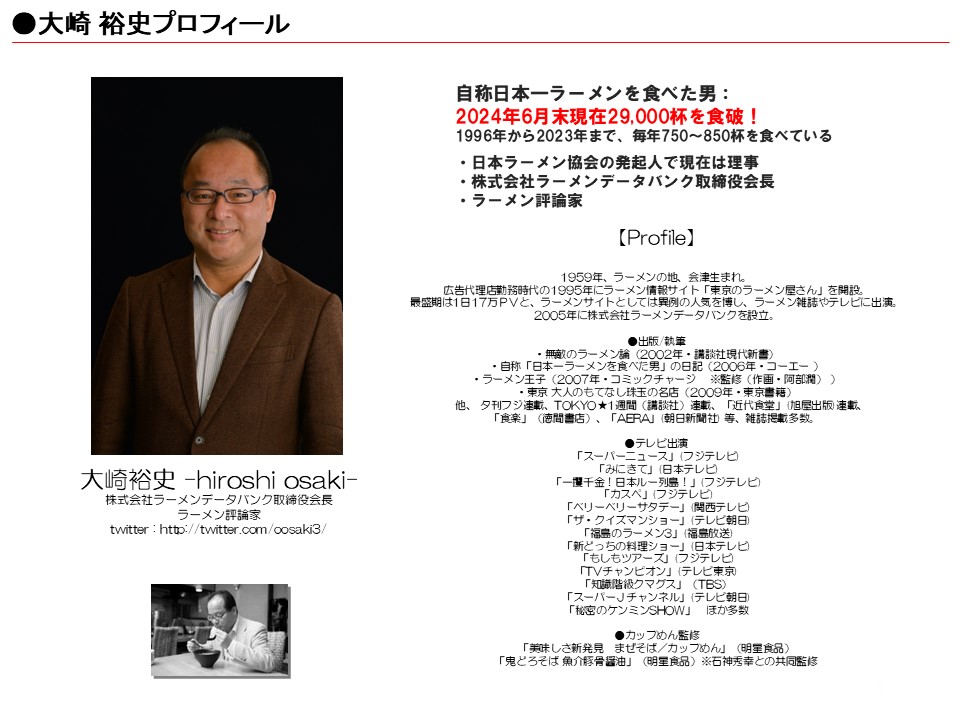Sapporo Rokubo(札幌 六坊) @ Takadanobaba
Opening on April 24, 2025.
Four ramen shops will be lined up along Waseda Street, halfway between Takadanobaba Station and Nishi-Waseda Station. (One is Malatang.)
The fourth shop of the “Watanabe(渡なべ)” group, which has been drawing lines for over 20 years in Takadanobaba.
A spin-off shop of a menu that has been offered several times as a limited menu at “Watanabe”.
I thought it would be crowded on the first day, so I passed and aimed for a late lunch on the second day, and when I went around 1:30 pm, I was 15th in line. It took 35 minutes to get a seat. It’s very popular. On the first day, more than 30 people lined up and the police came to give them instructions on how to line up? A warning? It seems that the owner is good at using YOUTUBE, and it was a huge success from the first day.
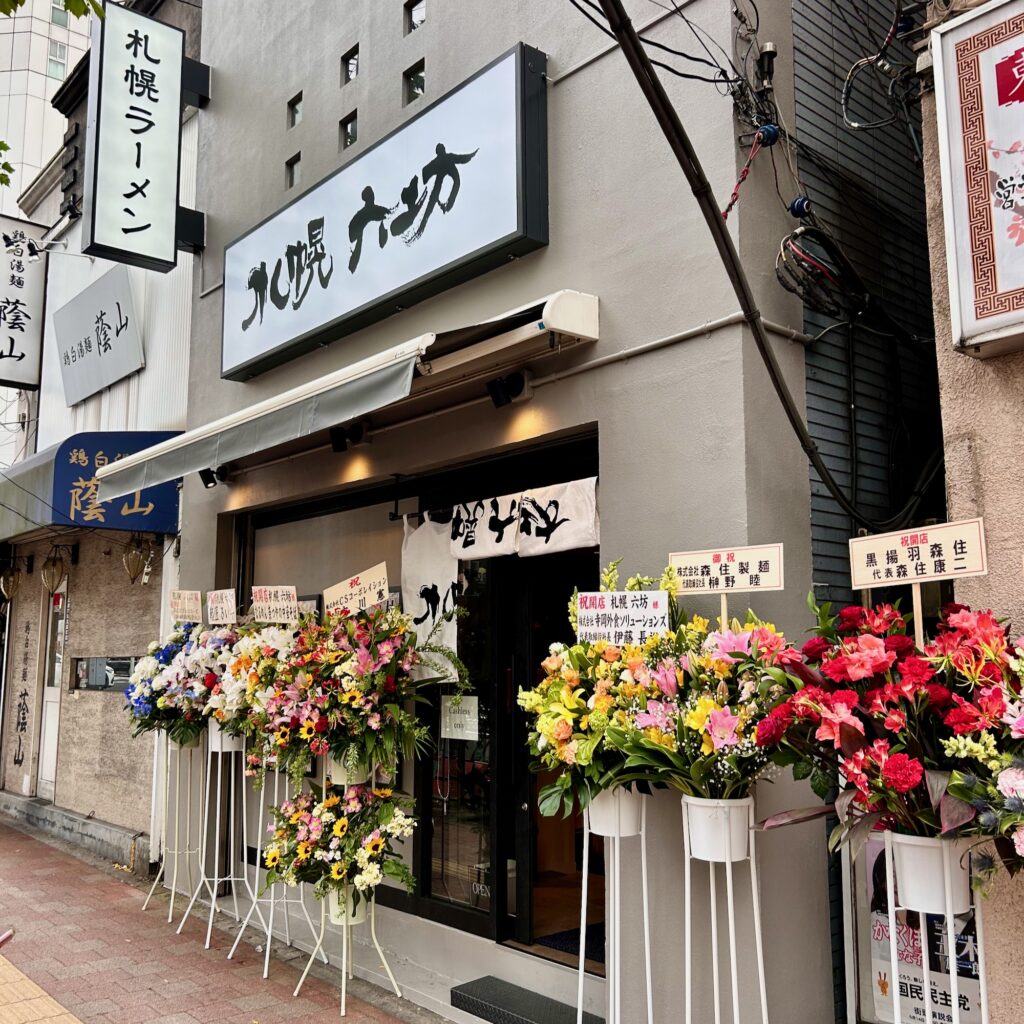
Although the restaurant name includes “Sapporo,” the main dish is not miso, but “Sapporo Black” (soy sauce flavor). The poster was hidden by a wreath, so the people on either side of me were eating miso.
If you like ramen, you should know that “Sapporo Black(札幌ブラック)” is served at “Isono Kazuo(いそのかづお)” in Sapporo. Watanabe, the owner of “Watanabe,” has also been there and likes it a lot, but he did not use the ramen as a reference. Of course, the name and the use of black soy sauce may have been hints, but the ramen is actually a hybrid of soy sauce from “Jun Sumi(純すみ系)” (ramen from “Sumire(すみれ)” and “Junren(純連)” and those who are from those restaurants) and “Toyama Black(富山ブラック).” It’s a menu that only Watanabe, a “ramen otaku owner,” could make.
Watanabe Style has used Mikawaya Seimen noodle factories since the restaurant opened. He was very strict and rarely used noodles from other noodle factories, even for limited editions. However, this Sapporo series is the only one that uses noodles from Sapporo. This time, they were sent by Morizumi Seimen in Sapporo. In Sapporo, it is customary for the noodle factory in charge of the shop’s noren to donate them, and this time, Morizumi Seimen also donated them with the shop’s name on them. This noren must have been essential for Watanabe-san, who is also a “ramen otaku” owner.
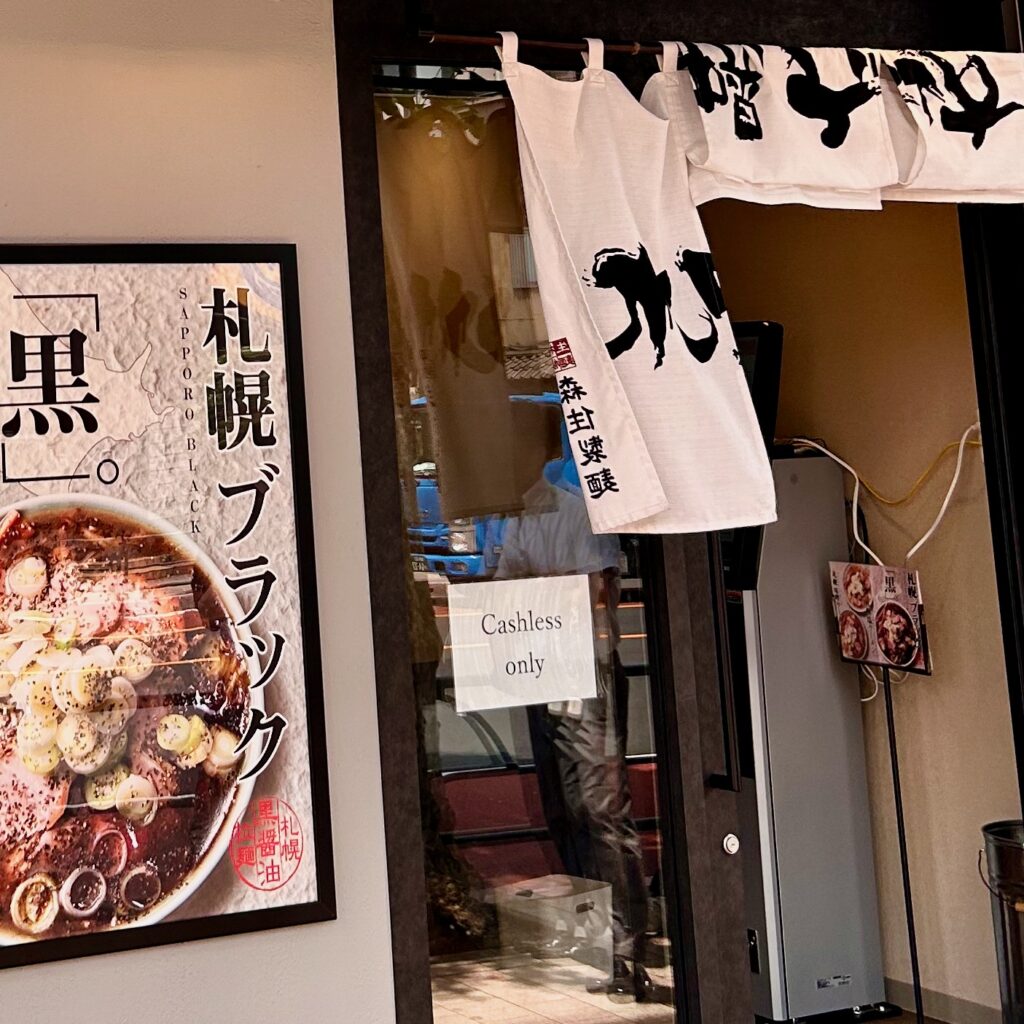
The ticket machine is the latest touch panel type. Cash cannot be used, cashless only.
The main menu items are Sapporo Black(札幌ブラック) 1200 yen, Sapporo Shio Ramen(札幌塩ラーメン) 1200 yen, Sapporo Miso Ramen(札幌味噌ラーメン) 1200 yen, seasoned egg(味玉) 150 yen, char siu(チャーシュー) 300 yen, and others. There are 10 seats at the counter, and the restroom is on the second floor.
I bought the “Sapporo Black,” which is the shop’s recommendation and my favorite. The bowl was filled with so much soup that it spilled out of the bowl and a little into the saucer. That alone makes it look very delicious. It’s strange that the soup spoon comes in a bowl even though there is a saucer. I took the photo after transferring it to the saucer. The black soup looks salty at first glance. In this case, there are restaurants that say, “It looks salty, but it’s mellow when you drink it,” but this one is really salty and I couldn’t drink it all (lol). It’s addictively salty and makes you want rice. The raw garlic is effective, and it’s hot and very Sapporo-like. The topping is 4-5 slices of sliced pork. Someone wrote that it was like a chan-style(ちゃん系) ramen, but this one is clearly older. The meat is closer to Toyama Black to begin with. And there’s chopped white onions and plenty of black pepper. I’ve eaten it many times in the past, and I’d say it’s a well-established brand menu. It’s very unique and delicious. (It’s quite salty, though) I wonder what ordinary people think about the saltiness when they eat it.
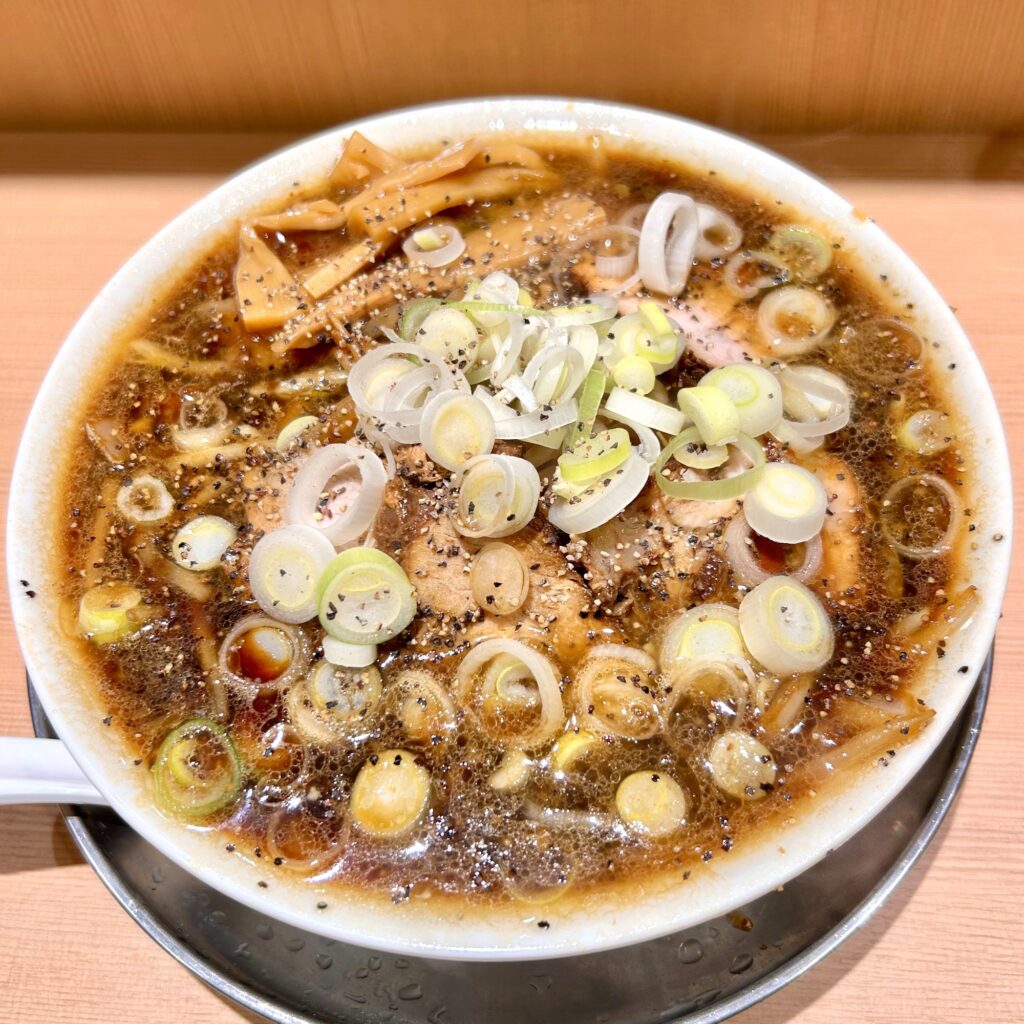
The noodles are made by Morizumi Seimen, a famous noodle factory in Sapporo, and the soup soaks into them so that the color of the noodles turns black, making them really delicious. The slightly firm texture is also nice.I would like to try the salt and miso flavors at a later date.
So I went back about a month later. I’m aiming for the salt ramen. It’s unusual that the recommended flavor is “black” (soy sauce) even though it’s a “Sapporo brand” ramen shop. And miso flavor isn’t even the second most popular. The second most popular flavor is “salt ramen.” Miso flavor is overwhelmingly popular for “junsumi” ramen, but at some stores, salt can be a hidden popular menu item. This is the case with “Ramen Go(ラーメン郷)” (Yamato City).
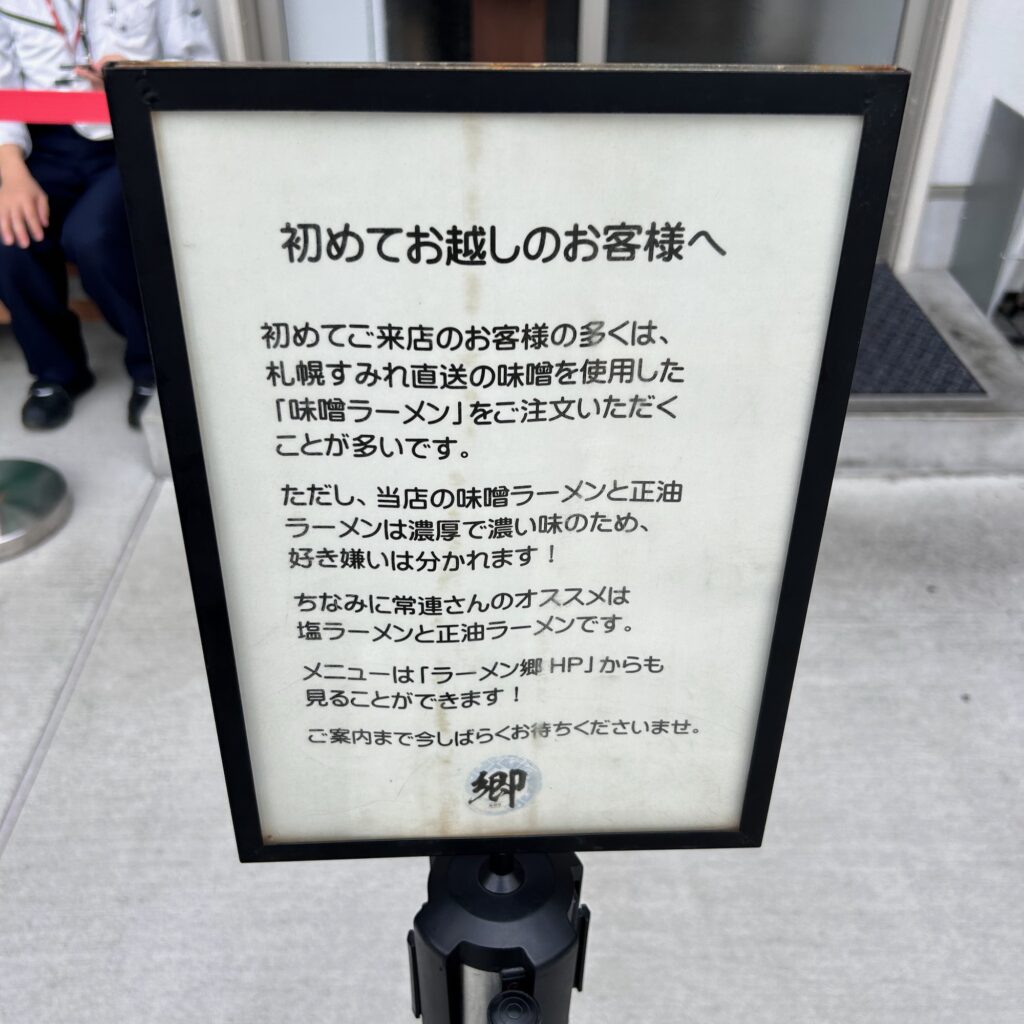
I like miso for junsumi ramen, so when I visit again, I often eat miso, but I rarely eat salt.
I don’t think I would eat it unless I had an opportunity like this, so this time I’m ready for the “salt” ramen. By the way, the flowers were gone and the recommended menu was visible.
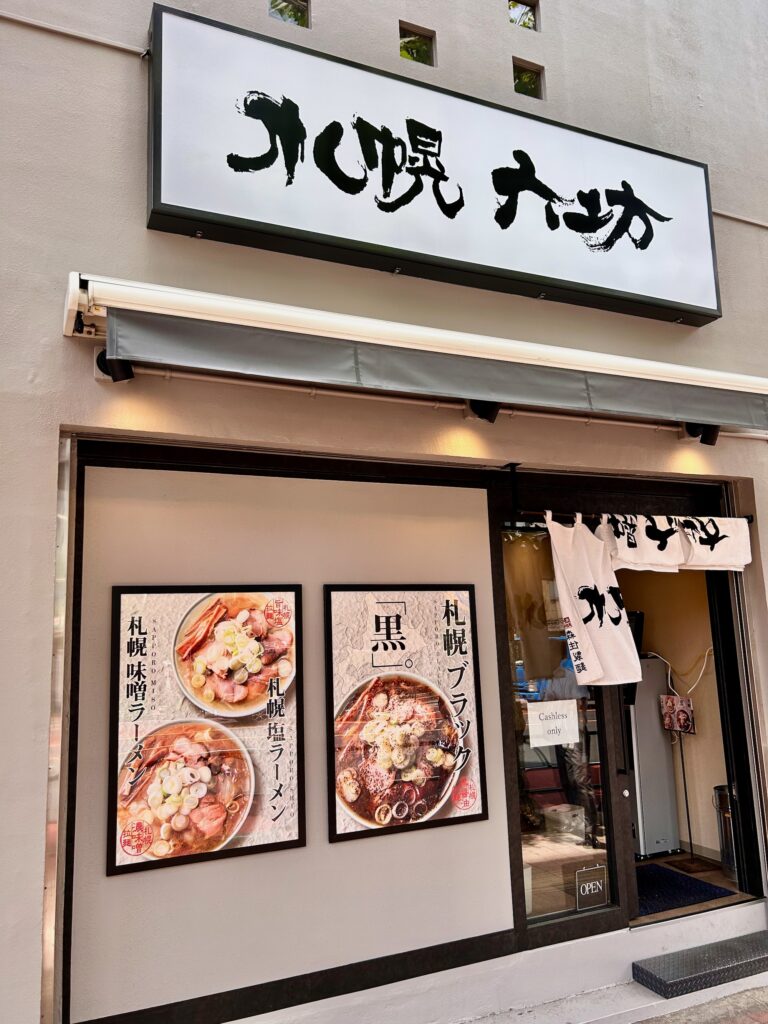
“Sapporo Black” was on top, followed by “Shio Ramen” and then “Miso Ramen”. The ticket machine also had it in that order. And the other day I had a miso ramen in Odaiba with corn butter, and this time I added “butter” and “corn” as additional toppings. These “butter” and “corn” were not on the menu in the local area of Sapporo long ago. But when the founder of “Dosanko(どさん子)” made butter and corn toppings based on the image of Sapporo, it became a big hit. On the other hand, there is an anecdote that he added it to the menu after tourists visited the Sapporo shop and asked for “butter and corn” more and more. And when I asked the founder directly, he told me with a laugh, “When I made Dosanko, I had never been to Sapporo.” So that’s what happens. I think that putting butter and corn in ramen is a “great invention” in a sense, but it’s an idea that came about because people don’t go to Sapporo. It’s an interesting story.
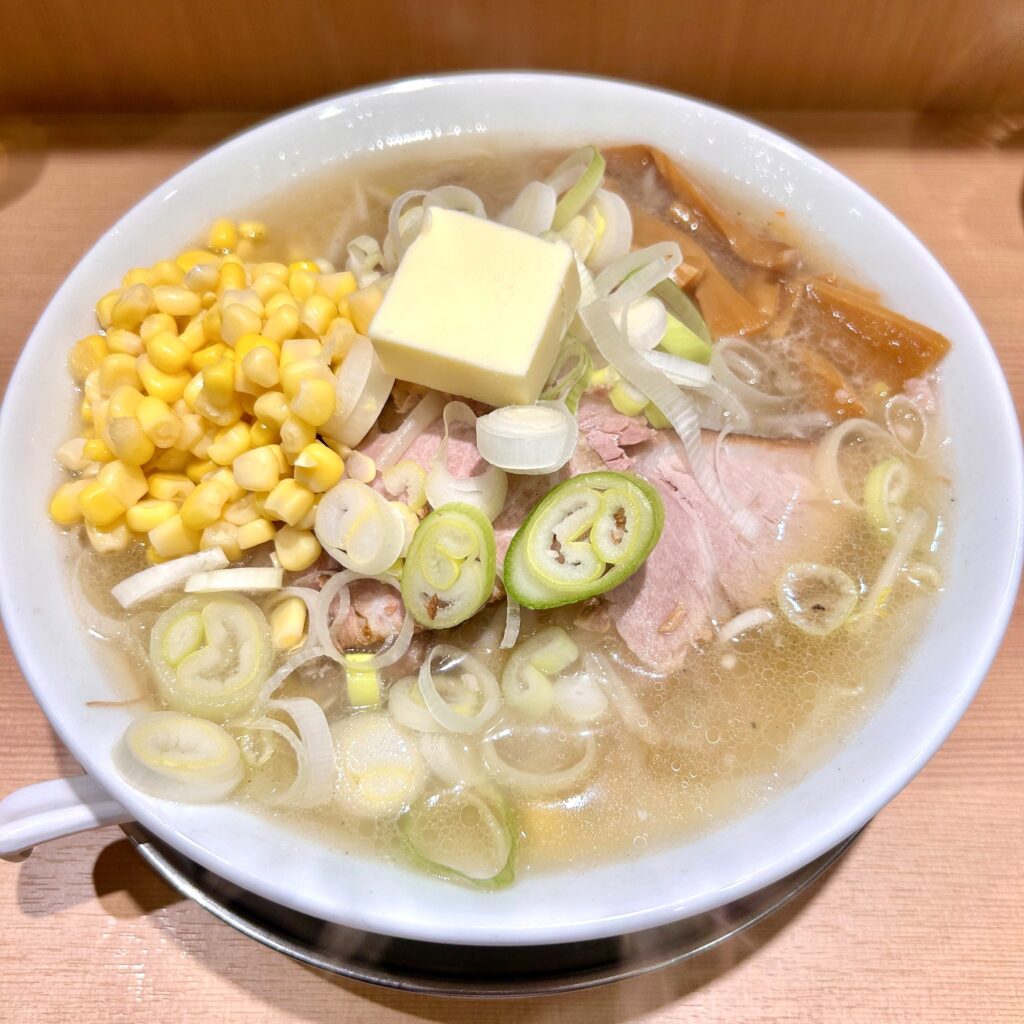
Now, for the salt ramen, I started eating without mixing it much at first, without any butter or corn. The base soup is the same as Sapporo Black, but it feels like something completely different in a good way, which is amazing. This menu is so delicious that they could open a salt ramen specialty store. As expected, they are more confident in their work than the miso. Then I started eating the parts with butter and corn. It really matches well. After all, putting butter and corn in ramen is an invention. It was really delicious, and when I scooped up the corn with a spoon and ate it, I ate the whole thing and drank it all. It was so good. Next is the third miso ramen. I wonder when I will eat it.
History of the “Watanabe(渡なべ)” Group (Watanabe Style)
●2002,April: “Watanabe(渡なべ)” (Takadanobaba) was founded.
●2010,March: “Jinbocho Kai(神保町 可以)” (Jinbocho) opened.
●2017,September: “Rokubo Dandanmen(六坊担々麺)” (Ikebukuro) opened.
●2022,March: “Kiwame Noodles(極み麺)” (Ikebukuro, closed)
History of the “Rokubo(六坊)” series
●2004?: Opened “Rokubo” in Hong Kong (closed).
●2005: “TOKYO NOODLE Rokubo(TOKYO NOODLE 六坊)” (Takadanobaba, closed)
●2017: Opened “Rokubo Dandan Noodles(六坊担々麺)” (Ikebukuro).
●2025: Opened “Sapporo Rokubo(札幌六坊)” (Takadanobaba).
History of Watanabe-style “Sapporo Black”
●2018: “Sapporo Black” debuted on a limited menu. It has appeared several times since then. Salt and miso flavors were also released at the same time.
●2022: Released cup noodles supervised by “Watanabe”. Named “Yamitsuki Black(やみつきブラック)”.
●2022: Opened a “Sapporo Black” shop at the Tokyo Ramen Festa (Komazawa Park).
●2025: Opened “Sapporo Rokubo” (Takadanobaba).
Shop Information
Sapporo Rokubo
1-4-18 Takadanobaba, Shinjuku-ku, Tokyo 169-0075

